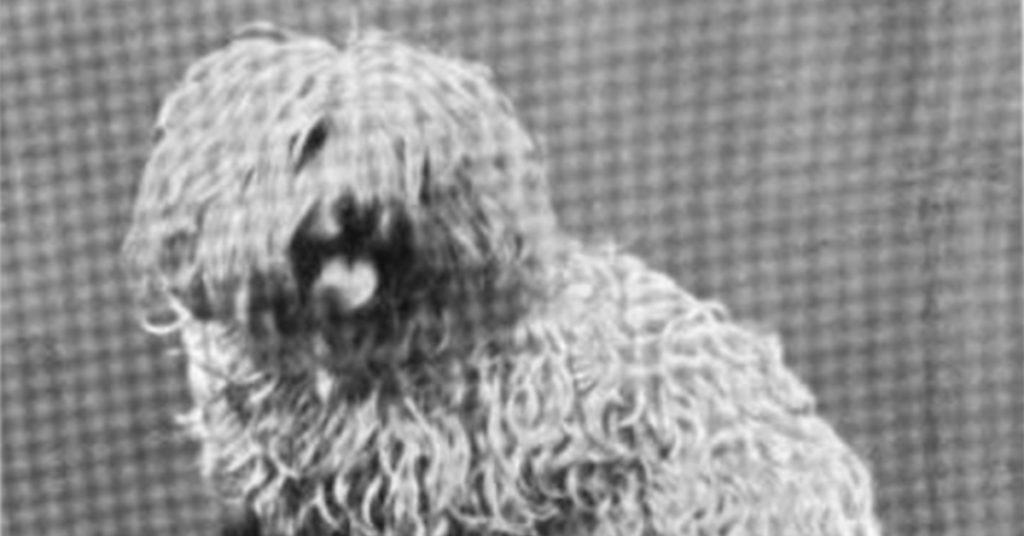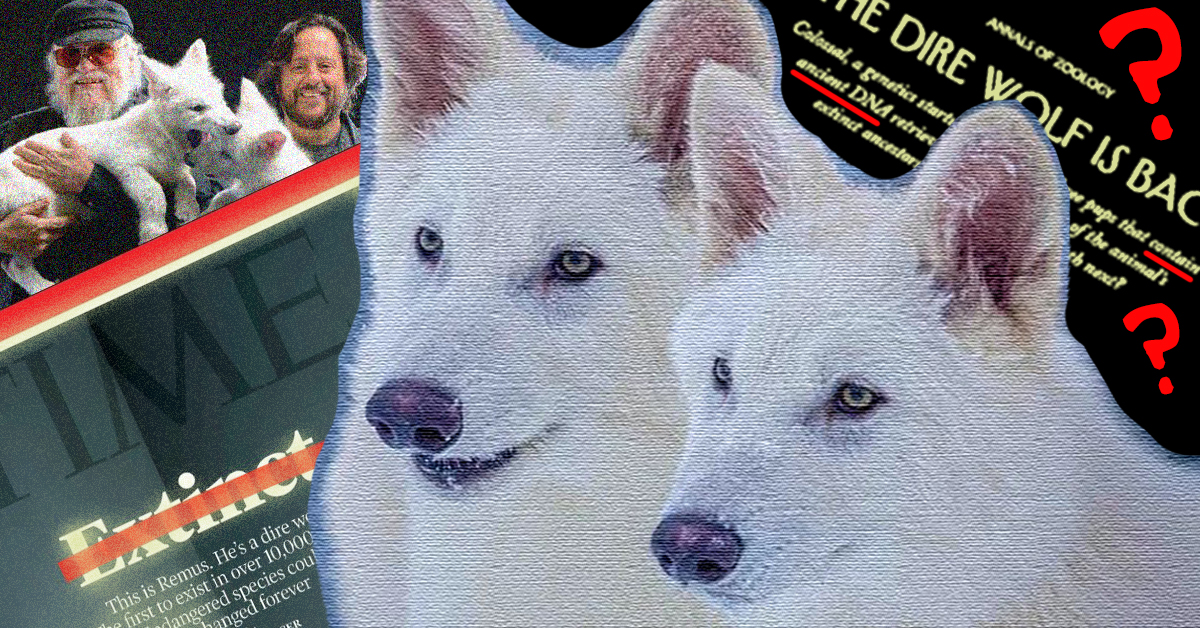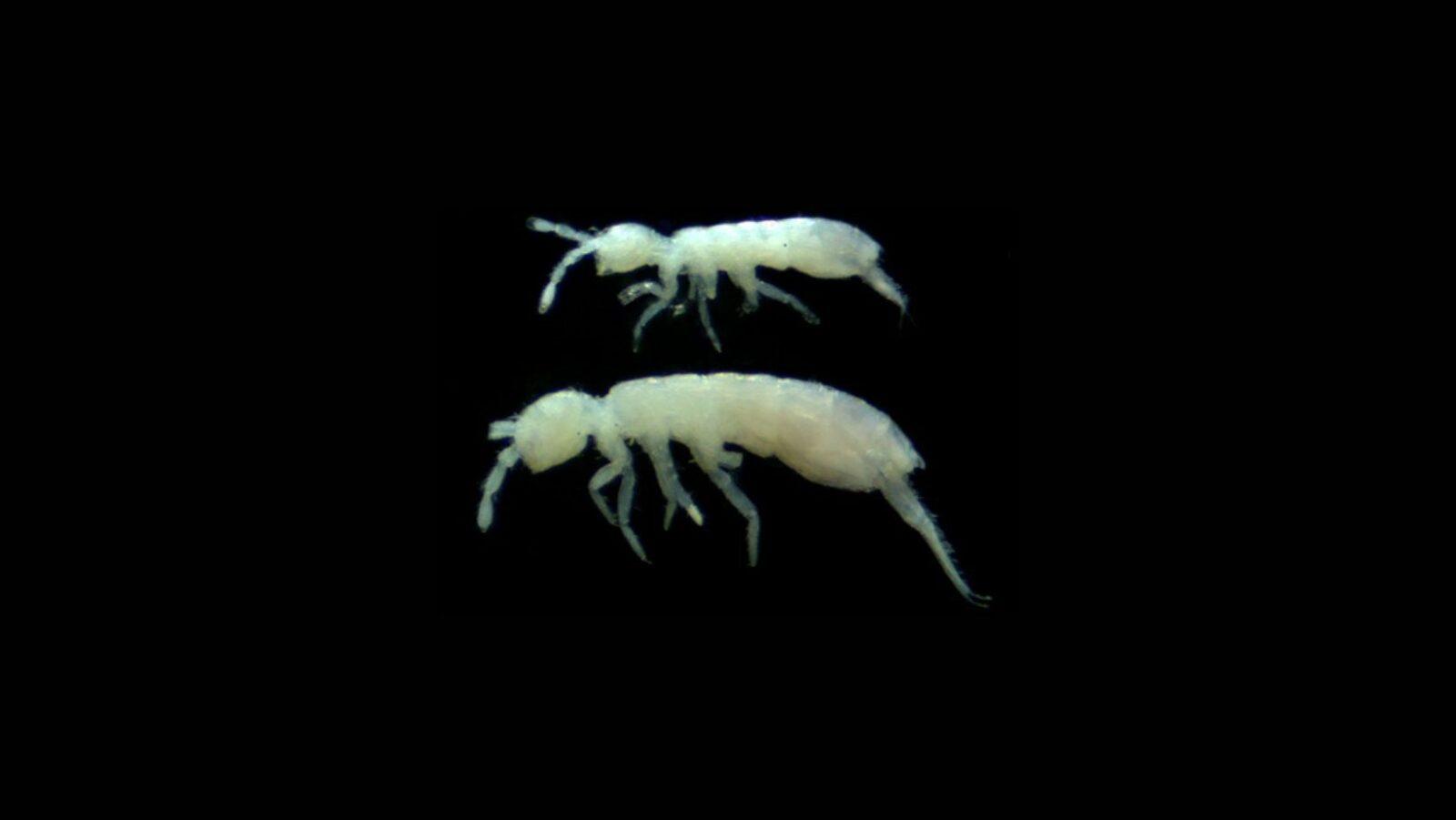
As weird as it may sound, this article only exists because of a low-quality photo of someone’s dog on Facebook.
To be more precise, the seeds of this story were planted when a random post on my news feed caught my attention. A friend had shared a photo from the National Purebred Dog Day page, an organization that celebrates “the heritage, diversity and predictability of the purebred dog.” (Since it went up in January 2016, the page’s post hasn’t received that much attention, with only 40 likes, 10 comments, and 4 shares as of this writing—an oddity in this age of viral posts showcasing “doggos” being irresistibly endearing.)
The image in question was a cropped, grainy reproduction of a black-and-white photograph, attributed to a certain Boursnell. The subject of the photo, Archer, was a shaggy little rug of a dog, with stubby legs and enormous eyes obscured by curly locks. It’s likely that the photo was taken inside a makeshift home studio, with Archer posing obediently for the camera. All things considered, the photo itself was rather unremarkable.
Yet there was a captivating, almost haunting quality to this poorly digitized photo of Archer, enough to make my eyes linger on it for a couple of seconds.
That’s when I noticed the caption: It called Archer a “Manilla Spaniel”—yes, with two Ls—a breed I was completely unfamiliar with. And apparently, I wasn’t alone; even the page admin indicated that they’d never heard of the breed before.
If it weren’t for the fact that the organization was legitimate, I would have quickly dismissed it as a photo deliberately miscaptioned with a fabricated story to create a share-worthy narrative. I mean, I’ve fact-checked enough dubious claims and fake health advice to know better than to instantly believe everything I read online.
Fortunately, there were a few bits of information in the caption for me to work with. Before pursuing those leads, though, I did a quick Google search for “Manila Spaniel” (without the extra L). After all, I didn’t want to waste time chasing my own tail, so to speak.
What I saw shocked me: The only result that matched what I was looking for was a Japanese wiki page. I decided to try “Manilla Spaniel,” which led me to even more links (including another wiki page, this time in Finnish).
With enough pieces of this pupper puzzle in front of me, the game was afoot: What is a Manilla Spaniel, and why have I never seen or heard of one in my entire life?
A ‘dog-gone’ mystery
The original Facebook post attributed most of the information it had on the Manilla Spaniel to an author named Desmond Morris. A bit of armchair sleuthing revealed Dr. Morris to be a rather prominent figure in the fields of zoology, ethology (animal behavior), and human sociobiology, with an extensive body of published scientific and artistic work spanning nearly seven decades. Now 92 and living in Ireland, I didn’t really expect the good doctor to be eager to chat about dogs with an internet stranger.
Nevertheless, I decided to send him an email—and to my pleasant surprise, I received a response.
Morris seemed just as enchanted (and baffled) by this mysterious breed as I was. “When I was in Manila, I did try to track down the Manilla Spaniel,” he wrote, “but it seemed to have vanished.“
In his 2001 book Dogs: The Ultimate Dictionary of Over 1,000 Dog Breeds, Morris described the Manilla Spaniel as a toy dog “named after the capital (now spelled Manila) of the Philippines, the city which was the breed’s stronghold.” Characterized as quick to learn, highly disciplined, fiercely loyal, and long-lived, the Manilla Spaniel became popular as a companion breed from the mid-19th century to the beginning of the 20th century.
Apparently, local breeders at the time paraded it as a native breed; even Morris himself doubts this, though. “Chances are that it was one of the highly-valued little lap-dogs that were carried around the world by early trading ships, for use in exchanges of luxury goods,” he wrote, likening it to Spain’s (and eventually France’s) Bichon Frisé, Cuba’s Havanese, and Madagascar’s Coton de Tuléar.
Based on the information in Morris’s book, the Manilla Spaniel was not a true spaniel dog. More likely, it was a bichon that was “very similar to the Maltese, but much larger.” It’s said to have weighed up to 16 lb. (7 kg.)—more than twice as heavy as a typical Maltese—with a long, wavy coat of mostly white fur, lustrous eyes, drooping ears, and a jet-black nose.
Numerous accounts from that period recognize, or at least reference, the existence of this breed. English painter Robert Elwes, author of the 1854 book A Sketcher’s Tour Round the World, wrote:
Manilla is famous for little white dogs, a sort of diminutive poodle, prettier than the Maltese dogs. They are very tractable, and are taught to sit on the arms of arm-chairs and beg, and do many other tricks; but are very delicate, and will not stand a cold climate.
Meanwhile, Robert MacMicking, a British merchant who sailed to the Philippines in the mid-1800s, had a more descriptive (if somewhat diminishing) take on the breed in Recollections of Manilla and the Philippines, During 1848, 1849, and 1850:
The only other dog at Manilla besides the worthless street cur, is a sort of ladies’ poodle, with long and silky white hairs; their fine coats only making them favorites, as they are good for nothing else than women’s pets.
The smaller these are, when full grown, the more they are esteemed; their white hair should be entirely free from any spots of black or brown, these being generally the mark of a mongrel breed.
They are so delicate, that few of them can stand a sea-voyage, and all those I have ever sent away from Manilla, to any distance, have died before reaching their destination. A well-bred dog of this breed of middling size, is about as large as a full-grown tom-cat, or a little bigger.
Despite being treated with great care (“like humans”), many dogs from Manilla, including the Manilla Spaniels, died during their long voyages due to stress, malnutrition, and poor hygiene. In his book Dogs of the British Isles, English sports writer John Henry Walsh (a.k.a. Stonehenge) told the tale of a mastiff breeder named Mr. Lukey. In 1841, he purchased and imported a pair of dogs from Manilla as a royal gift. Sadly, the poor dogs’ health had deteriorated during the trip, so much that they were never presented to the Queen.
Still, that didn’t stop English dog enthusiasts from gathering and preserving the Manilla Spaniel, both for show and for breeding. An issue of the glossy magazine Country Life published on August 28, 1897 recounted the story of a Ms. Pidgeley, who had reportedly been trying to form a kennel of Manilla Spaniels in England. As it turns out, Ms. Pidgeley was actually Archer’s owner, describing him as “a remarkably healthy dog” who “gave little or no trouble in the house.” Archer apparently had a partner, Tina, who lived up to the ripe old age of 18.

It was in that same issue where the photo of Archer I saw on Facebook—quite possibly one of the few, if not the only photo of a confirmed Manilla Spaniel in existence—was first published.
There’s also evidence that the breed reached Australia. In 1863, the Sydney Morning Herald ran an advertisement for a Mr. Walter Bradley, who was auctioning off four “very beautiful” Manilla Spaniels. Five years later, Melbourne’s The Argus printed an ad offering a reward for the recovery of a lost black-and-white Manilla Spaniel.

Unfortunately, despite breeders’ best efforts, the breed went extinct outside the Philippines by the mid-20th century.
“It was obviously a wonderfully attractive breed, and I cannot understand why it has gone extinct,” lamented Morris in his email to me. He even suggested advertising in the local press, in the hopes of finding some of them. “It should be revived as a breed.”
This, of course, raises an important question: Why did the Manilla Spaniel go extinct?
Barking up the wrong (family) tree?
When we hear the word “extinction,” we typically think of an entire species getting wiped out. That’s not the case with dog breeds, though, as they all share the same binomial designations: Canis familiaris (which is more common) or Canis lupus familiaris (pertaining to direct subspecies of Canis lupus, the wolf).
“Dogs came from the domestication of wolves,” explained Dr. Ibarra Ariel Poliquit, a veterinarian currently affiliated with De La Salle Araneta University. According to Poliquit, different dog breeds result from both natural and artificial selection: “Natural in a sense that most breeds are climate-dependent, and artificial because they were bred for certain uses.”
To illustrate this, Poliquit compared huskies to chihuahuas. Huskies are large with thick coats, because they’re bred in extremely cold places and trained to pull snow sleds. On the other hand, chihuahuas are bred in tropical locales as guard dogs (which also explains why it’s hard to find a quiet chihuahua).
So how exactly does a dog breed go extinct? As Poliquit put it: “A dog breed may go extinct if they do not mate with another pure breed and produce purebred offspring.” As for the Manilla Spaniel, Poliquit said that he only read about it during his college days, and that it was allegedly “unaccepted” as a breed of its own.
For a breed to be considered a true, pure breed, it has to meet a certain set of standards and be registered as an official breed. The world’s first national kennel club was the UK’s Kennel Club, established in 1873. In the Philippines, the Philippine Canine Club, Inc. (PCCI) is the only accredited registering body for purebred dogs—and the Manilla Spaniel does not appear in their list of recognized companion and toy dogs.
“Based on what I’ve read, there wasn’t enough evidence of the existence of a native spaniel, or it wasn’t registered as an official breed,” shared Poliquit. “Some argue that the Manilla Spaniel was just a large Maltese, bichon, or Havanese.”
It’s also worth noting that the Manilla Spaniel’s rise in popularity coincided with a critical period in Philippine history: the Spanish and American occupations. In other words, our forefathers’ priorities were likely (and understandably) elsewhere.
Paw-radigm shift
Compared to other countries, the history of dogs in the Philippines isn’t as well-documented. That’s largely because of the fact that our native Askals—“asong kalye” or “street dogs”—have no pedigree (or record of descent).
“That kind of narrative alienated our consciousness to document our own dogs,” shared anthropologist Dr. Chester B. Cabalza, a graduate school professor at the University of the Philippines Diliman. “It goes with our colonial experience that imported dogs are more highly regarded than native Philippine dogs.”
According to Cabalza, during colonial times, local dogs didn’t enjoy the premium status granted to their imported counterparts.
“Native dogs were considered as ‘bantay,’ or just guards in most Filipino houses or neighborhoods. They were also used for kaingin (slash-and-burn), recipes, and dog fights among indigenous peoples and the Filipino culture as a whole.”
Fortunately, our collective perception towards our only recognized native breed—now called Aspin, or “asong Pinoy”—has changed for the better.
Cabalza attributes part of this “paradigm shift” to American influence, with Hollywood molding our consciousness of dogs as man’s best friend. Of course, we didn’t just embrace that notion; we took it a notch higher, elevating our furry friends to family member status.
“From being regarded as pets, dogs are now more than that [to Filipinos] because of their loyalty and the joy they bring to us,” said Cabalza, adding that amendments to our existing laws also improved our awareness of their rights and welfare.
Still, Cabalza stressed the need for treating Aspins with the same level of regard as any other breed of dog. “The Aspin represents us as people and the resiliency of our nation. Considered as snappy, short and strong animals, Aspin dogs reflect our collective values and aspirations.”
At this point, we may never know for sure what happened to the Manilla Spaniel, or if it was truly an actual, separate breed in the first place. Any evidence of its existence that wasn’t recorded in those old books is likely lost to time now.
Then again, while it certainly is unfortunate, maybe it’s not such a bad thing.
“I think it just shows that Pinoys don’t care that much about breeds,” Poliquit observed. “We just love dogs.”
Still, thank you for blessing my news feed, Archer. Manilla Spaniel or not, it would have been nice to meet such a good boy as yourself.
References
- “A. S. R.” (1897, August). Some ladies’ dogs. Country Life, 11(34), 209.
- “Mrs. Warren” (1870). About dogs. The Ladies’ Treasury and Treasury of Literature, VIII, 37.
- Elwes, R. A Sketcher’s Tour Round the World. London, Hurst and Blackett, 1854.
- F. A. L. (1967). The Maltese. K.C.C. Kennel Gazette, 33(8), 24.
- Hill, T. E. Hill’s Album of Biography and Art. Chicago. 1890.
- Leighton, R. The New Book of The Dog. London, Cassell, 1907.
- MacMicking, R. Recollections of Manilla and the Philippines: During 1848, 1849, and 1850. London, R. Bentley, 1851.
- Morris, D. Dogs: The Ultimate Dictionary Of Over 1,000 Dog Breeds. London, Ebury, 2001.
- Walsh, J. H. The Dogs of the British Islands. London, “The Field” Office, 1878.
Author: Mikael Angelo Francisco
Bitten by the science writing bug, Mikael has years of writing and editorial experience under his belt. As the editor-in-chief of FlipScience, Mikael has sworn to help make science more fun and interesting for geeky readers and casual audiences alike.









